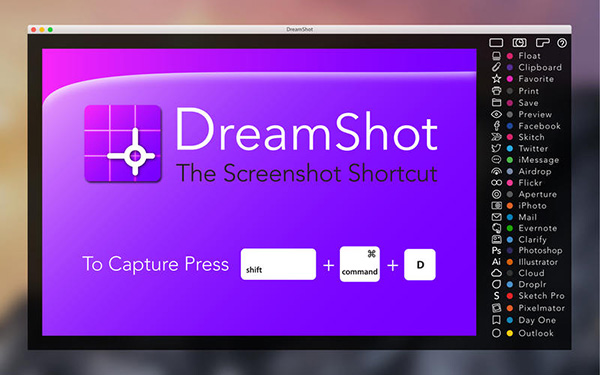Apple Pie (Hangman) Mac OS

“I know what would be a fun little project for Think Retro,” I thought one day, like the prize chump I am: “installing a classic Mac OS onto a Raspberry Pi.”
Apple is an equal opportunity employer that is committed to inclusion and diversity. We take affirmative action to ensure equal opportunity for all applicants without regard to race, color, religion, sex, sexual orientation, gender identity, national origin, disability, Veteran status, or other legally protected characteristics. Additional Apple Card Monthly Installments and iPhone Payments terms apply. To access and use all the features of Apple Card, you must add Apple Card to Wallet on an iPhone or iPad with iOS 12.4 or later or iPadOS. To manage Apple Card Monthly Installments, you need an iPhone with iOS 13.2 or later or an iPad with iPadOS 13.2 or later. On keyboards made for Windows PCs, use the Alt key instead of Option, and the Windows logo key instead of Command. Some keys on some Apple keyboards have special symbols and functions, such as for display brightness, keyboard brightness, Mission Control, and more. Jan 22, 2021 Apple is an equal opportunity employer that is committed to inclusion and diversity. We take affirmative action to ensure equal opportunity for all applicants without regard to race, color, religion, sex, sexual orientation, gender identity, national origin, disability, Veteran status, or other legally protected characteristics. In this installment of Think Retro, our hero runs into the very problems Apple built Mac OS to solve in the first place. Think Retro By Christopher Phin Dec 1, 2015 12:34 am PST.
Apple Pie (hangman) Mac Os Download
The key words there were “fun” and “little,” but as the hours ticked by it was clear that “little” was laughably optimistic, and “fun” was true only in the way that a day at boot camp is fun: you know it’s good for you to be pushed out of your comfort zone and exercise bits of your anatomy that are usually blissfully underused, but you only really feel it was actually fun once you’re back at home, soaking in the tub and with a glass of port within easy reach.
The problem, of course, is that you can’t install Mac OS directly onto the Raspberry Pi—it wasn’t built for that platform—but I wanted Mac OS on the Pi because it seemed like there was a nice echo not just in how both the Pi and Mac played a part in democratizing computing but also in their hardware capabilities. Clearly, even a Rev. A Raspberry Pi is technically far more powerful than was the original Macintosh, but there’s still something pleasing to me about doing it this way rather than just installing an emulator on my 4GHz Core i7 iMac 5K.
Something of the spirit of Woz and the Apple I and II seems to live on in the Raspberry Pi.
And besides, to confuse the early Apple computers a bit, something of the spirit of Woz and the Apple I and II seems to live on in the Raspberry Pi. Plus, I could bust out my ADB to USB adapter—or so I fondly imagined—so that I could use a proper old-skool Apple keyboard and mouse with it.
Anyway. At this point, I was lulled into a false sense of security when my initial research threw up phrases like “easy” and “prebuilt binary.” The implication was that other people had done the hard work of getting Mac OS to run in emulation on the Raspberry Pi and all I had to do was run a script. And indeed, ultimately, it proved—but I had failed to take into account my idiocy.
Actually, that’s unfair. I’m not an idiot, I’m just someone whose first experiences with computers involved slotting a tape into a deck and switching them on and who then leapfrogged straight to GUIs. I’ve never spent much time in the command line.
Thus, when I sat down to install Mac OS on my Raspberry Pi, I kept getting stumped by the most basic things. I know there will be people far more experienced and knowledgeable than me (and also, what’s worse, much less so) who will be baffled by how anyone calling themselves a technology journalist can be so perplexed by such fundamental tasks, but like me, you might have found this often if you’ve dabbled in Linux or with the Pi.
For example, this first comment on this Reddit thread at /r/VintageApple suggests that you just issue a few commands and everything’s done for you. And this is true. It’s just that, having installed Raspbian on my Pi using the beginner-friendly NOOBS method, when it’s booted I am first faced with the question of where I issue those commands.
OK, so I’m not so green that I don’t think of launching a Terminal window. SoI do that, type in the first line, and hit Return—even this being an assumption—and I get an error about not being root. From this vantage point as I write these words, some hours and several different install method attempts later, I assume that I ought instead to have prefixed the command with “sudo,” but this is the kind of thing that kept stopping me in my tracks.
“There is a prebuilt binary of Mini vMac and I think Basilisk in the RetroPie image,” the Reddit thread burbles happily. “Recommend because nice front end.” Well that sounds like just the ticket. I Google RetroPie, which turns out to be a collection of emulated hardware, heavy on vintage games consoles, and… well, look, basically, me documenting all the things I tried and which, for a glitteringly broad range of reasons, failed to get working would be as turgid for you to read as it was for me to live through.
There was a lot of this kind of thing…
…and occasional glimpses of these frightful old pseudo-GUI configuration pages which after so long lost in the command-line were like a goblet of urine to a man wandering in the desert: vile, but a bewitching reminder of what your life could be like when this was all over.
I broke for lunch after one of my attempts, which should have been simple—installing a ready-made version of RetroPie onto an SD card—failed because even though I didn’t want to use RetroPie for gaming, it refused to load because it couldn’t detect a gamepad, and I didn’t have a compatible one to use with it.I came back after lunch ostensibly refreshed and reinvigorated but as soon as I looked at the infestation of browser tabs strewn over my Mac’s three screens, my scribbled notes, and the dregs of espresso that had powered my morning experimentations, I lost heart, and decided to give up.
I felt bad about this for the rest of the day—disappointed in myself because this should have been within my grasp, and for having caved after only a morning’s effort—until I realized that the kinds of problems I’d been having, indeed the existence of these problems at all, were the very things the Mac was originally designed to banish.
I will make this work at some point—it will be easier because I’ll both have had this morning’s experience and will have learned from that to allocate some proper time to the project—but for now, I’m happy to reach behind my Classic II and flick a switch whenever I feel the need to potter about in vintage Mac OS. And when I do, I give thanks once again to Apple for making computers that easy.
Dream it up.
Jot it down.
Apple Pencil sets the standard for how drawing, note‑taking, and marking up documents should feel — intuitive, precise, and magical. All with imperceptible lag, pixel‑perfect precision, tilt and pressure sensitivity, and support for palm rejection. Incredibly easy to use and ready when inspiration strikes.
Magically pair.
Wirelessly charge.
Apple Pencil attaches magnetically to the side of your iPad Pro or iPad Air and automatically pairs and charges on the go.
Accessories that let you make iPad your own.
Apple Pie (hangman) Mac Os X

Explore keyboards, cases, covers, Apple Pencil, AirPods, and more.
Which iPad is right for you?
New iPad Pro
Apple Pie (hangman) Mac Os Download
The ultimate iPad experience.
iPad Air
Powerful. Colorful. Wonderful.
iPad
Delightfully capable. Surprisingly affordable.
iPad mini
Small in size. Big on capability.